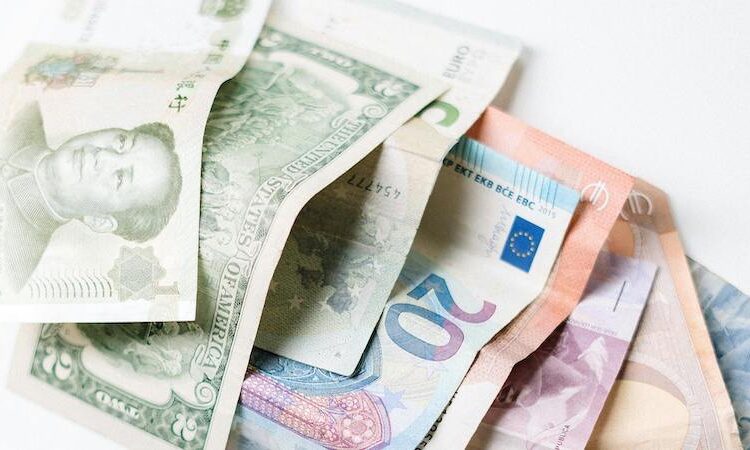
By Masaaki Yoshimori
The United States dollar has long held its position as the world’s dominant currency. This is mainly due to the vast size and stability of the US economy and the unmatched liquidity of its financial markets. These factors have solidified the dollar’s supremacy in international trade and finance, with the US economy valued at over $25 trillion. However, in recent years, two other currencies — the European euro and the Chinese renminbi — have emerged as potential challengers to the dollar’s supremacy.
The euro, underpinned by the Eurozone’s robust institutional framework, offers political stability and a solid monetary authority. These traits make it a compelling candidate for a global reserve currency. Nevertheless, the structural and political fragmentationwithin the European Union and divergent fiscal policies among its member states undermine the euro’s reliability as a universal reserve asset. As of 2023, the euro accounts for just 21% of global foreign exchange reserves compared to the US dollar’s commanding 58%. Even with the issuance of 400 billion euros (over $447 billion) in jointly backed debt during the Covid-19 crisis, the Eurozone still lacks the deep and liquid debt markets needed to elevate the euro’s status as a reserve currency.
China’s rapid economic growth and its expanding role in global trade have significantly boosted the renminbi’s global status. In 2023, the renminbi accounted for 3.71% of global payments by value, according to Society for Worldwide Interbank Financial Telecommunications (SWIFT). Its share of trade finance payments doubled from 4% in 2022 to 8% in 2024. These advancements, driven by China’s economic prowess, have positioned the renminbi as a potential global reserve currency.
However, it still faces substantial obstacles that deter other countries from adopting the renminbi as a reserve currency. These include strict capital controls, a lack of transparency in financial markets and the Chinese Communist Party’s centralized political power.
The dollar’s competition
Recent discussions highlight potential shifts that could influence the demand for dollar alternatives. For instance, emerging markets might begin issuing more debt in the currencies of their trading partners, like China. In 2023, China’s Panda bond market experienced record growth, with foreign issuers raising over $15.3 billion in renminbi-denominated bonds, up from $12.4 billion in 2022. This major growth signals an increasing confidence in the renminbi as a funding currency, potentially advancing its status as a reserve currency.
Also, China’s efforts to promote the renminbi as a global currency include the 2015 establishment of the Cross-Border Interbank Payment System (CIPS) and the development of the digital yuan (e-CNY). These initiatives aim to reduce reliance on US-dominated financial systems like SWIFT and increase the renminbi’s global accessibility. However, the renminbi’s share of global reserves remains minimal, at just 3% compared to the dollar’s 58%.
Furthermore, the introduction of central bank digital currencies (CBDCs) could reshape the global currency landscape. However, the dollar’s dominance in DeFi trading, where 99% of stablecoins are pegged to the dollar, suggests that any expansion in digital currencies will likely reinforce the dollar’s role.
Why the dollar endures
Despite the growing presence of the euro and renminbi, the dollar remains firmly in the lead. Its stability and liquidity, combined with the US’s geopolitical influence — which is underpinned by a $877 billion military budget — ensures its continued dominance. The euro faces significant hurdles due to political fragmentation within the EU and differing fiscal policies among its member states. These undermine its reliability as a universal reserve currency despite its relatively large share of global reserves.
Geopolitical factors also play a crucial role in maintaining the dollar’s dominance. Its status as the world’s leading currency is reinforced by US political and military supremacy, as well as its unrivaled sanctioning power. Countries that rely on the dollar for international trade and financial transactions are more likely to align their policies with US interests. This further entrenches its central role in the global financial system.
From an econophysics perspective, the strength of the dollar evidently endures compared to the euro and renminbi. By quantifying the divergence rates between the dollar and these currencies, analysis reaffirms the dollar’s role as the core of the global financial system from 2001 to 2022. Even with emerging challengers, its dominance is likely to persist. It is supported by the unparalleled liquidity of US financial markets, the US’s geopolitical influence and the historical legacy of the Bretton Woods system.
While the euro and renminbi have made notable strides in global trade and finance, they do not yet present credible alternatives to the dollar as the world’s primary reserve currency. The structural and political challenges both currencies face suggest that the dollar’s dominance will continue for the foreseeable future.
The views expressed in this article are the author’s own and do not necessarily reflect Fair Observer’s editorial policy.
- About the author: Masaaki Yoshimori is an economist. He was born in Ashiya and grew up in Kuwana, Japan. He belongs to the McCourt School of Public Policy, a constituent school of Georgetown University in Washington, DC. He previously served as a fellow in International Economics at the James A. Baker III Institute for Public Policy at Rice University in Houston, Texas. Yoshinori’s research spans a broad spectrum of critical issues in global economics, including monetary policy, exchange rate policy, financial regulation, macroeconomics and the intersections of climate change with economic systems. Additionally, his work delves into the political economy, exploring the impacts of globalization on the monetary system and the evolving challenges faced by global financial institutions.
- Source: This article was published by Fair Observer
